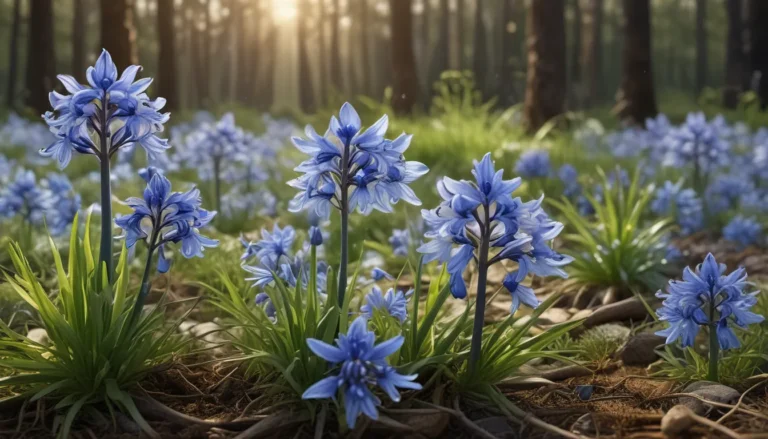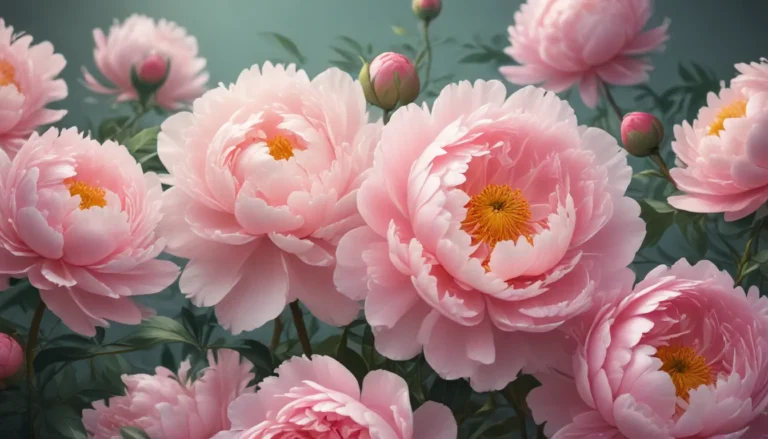The pictures we use in our articles might not show exactly what the words say. We choose these pictures to make you interested in reading more. The pictures work together with the words but don’t take their place. The words still tell you the important facts.
Welcome to a world where nature's wonders unfold in the delicate petals of Queen Anne's Lace, also affectionately known as Wild Carrot. As you delve into the captivating realm of this enchanting plant, you will uncover a tapestry of intriguing facts and hidden secrets that make Queen Anne's Lace a true marvel of the botanical world. Join us on a journey through 13 unbelievable facts about Queen Anne's Lace, where beauty, history, and symbolism intertwine to create a story as enchanting as the plant itself.
Unveiling the Charms of Queen Anne’s Lace
Queen Anne's Lace, scientifically identified as Daucus carota subsp. carota, is a delicate and beautiful wildflower that graces landscapes with its intricate lacy appearance. Belonging to the Apiaceae family, this biennial plant originates from Europe and parts of Asia but now thrives in various regions worldwide, captivating all who gaze upon its exquisite blooms.
The Enchantment of Umbel-shaped Flowerheads
At the heart of Queen Anne's Lace lies its intricate umbel-shaped flowerheads, forming flat-topped clusters of tiny flowers that exude grace and beauty. While predominantly white, these flowers occasionally bloom in shades of pink or purple, creating a whimsical allure that earned the plant its elegant moniker, "Queen Anne's Lace."
A Haven for Pollinators
The allure of Queen Anne's Lace extends beyond its visual appeal to the realm of pollinators, including bees, butterflies, and beetles. These nectar-rich flowers serve as a vital food source for these charming creatures, with the flat-topped structure of the umbel providing easy access for them to partake in nature's bounty.
Edible Treasures Await
Delve deeper into the realm of Queen Anne's Lace, and you'll uncover a culinary treasure trove within its roots and leaves. The tender young leaves offer a delightful addition to salads or cooked dishes, while the roots can be boiled and enjoyed as a nutritious vegetable. However, exercise caution in your culinary adventures, as Queen Anne's Lace bears a resemblance to poisonous plants like hemlock.
Embracing the Biennial Life Cycle
Embark on a journey through the life cycle of Queen Anne's Lace, where the plant unfolds its story in two acts. In the first year, a rosette of leaves graces the earth, followed by tall, erect stems adorned with exquisite flowerheads in the second year, reaching heights of up to three feet in a graceful display of nature's artistry.
Thriving Amidst Disturbances
Witness the resilience of Queen Anne's Lace as it flourishes in disturbed habitats, including roadsides, abandoned fields, and meadows. This plant's remarkable adaptability allows it to colonize these areas, transforming them into enchanting landscapes that captivate the hearts of all who behold its beauty.
Embracing Nature’s Touch in Gardens
Invite the wild allure of Queen Anne's Lace into your garden, where it effortlessly naturalizes and spreads its charm with ease. Once established, this captivating plant self-seeds and lends a touch of wilderness to your landscape, creating a harmonious blend of beauty and nature's touch.
Unveiling Traditional Medicinal Uses
Explore the rich tapestry of history as you discover the traditional medicinal uses of Queen Anne's Lace. From seeds with diuretic and carminative properties to remedies for digestive ailments and mild sedatives, this plant has woven itself into the fabric of healing practices throughout the ages.
Symbolism in Nature’s Canvas
Delve into the realm of symbolism as Queen Anne's Lace unveils its multiple meanings in folklore and cultural traditions. From associations with femininity, delicacy, and grace to symbols of protection and the sun, this enchanting plant weaves a tapestry of symbolic significance that resonates across diverse cultures.
Inspiring the Hearts of Artists
Step into the world of artistic expression as Queen Anne's Lace captivates the hearts of artists through its intricate and delicate structure. From botanical illustrations to paintings and photography, this wildflower serves as a muse for creatives, inspiring works that celebrate its timeless beauty and grace.
Nurturing Wildlife and Ecosystems
Celebrate the vital role of Queen Anne's Lace in nurturing wildlife and sustaining ecosystems through its abundant flowers and nourishing seeds. From pollinators like bees and butterflies to birds and small mammals, this plant provides a haven of sustenance and beauty amidst the tapestry of nature's offerings.
Honoring a Royal Legacy
Pay homage to the royal legacy of Queen Anne's Lace as you trace the roots of its common name to Queen Anne of Great Britain, renowned for her skill in lace-making. Let the regal charm of this title echo through the ages, embodying the grace and elegance that define this captivating wildflower.
Savoring Herbal Delights and Fragrances
Indulge in the aromatic wonders of Queen Anne's Lace as its flowers and leaves infuse herbal teas with their fragrant essence. Celebrated for their medicinal properties and soothing aroma, these herbal delights offer a sensory experience that elevates the spirit and nurtures the soul.
In closing, the enchanting world of Queen Anne's Lace beckons all who seek beauty, wisdom, and wonder in nature's embrace. Whether you are a lover of botanical treasures, a connoisseur of herbal remedies, or a soul yearning for connection with the natural world, the astonishing facts about Queen Anne's Lace will delight your senses and expand your horizons. So, step into the realm of Queen Anne's Lace, where beauty, history, and symbolism intertwine in a tapestry of enchantment that transcends time and captivates the heart. Embark on this journey of discovery, and let the magic of Queen Anne's Lace inspire your soul and kindle your spirit with the wonders of nature's infinite grace and beauty.






